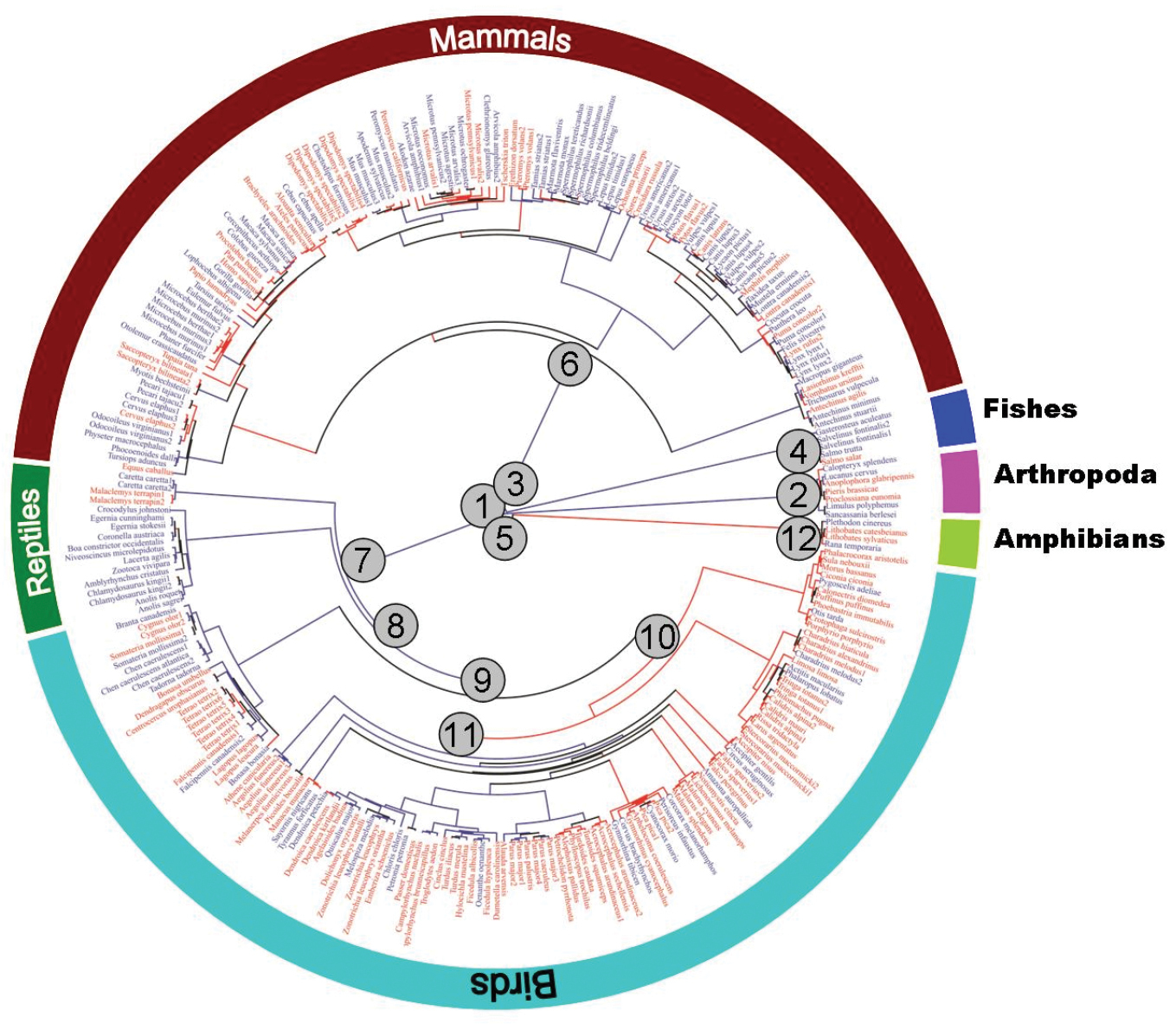
|
||
|
Phylogenetic tree of the ancestral character states reconstruction of sex-biased dispersal based on a parsimonious method on the 216 species (275 populations from publications) used. Branches and tips are coloured in blue for a male biased dispersal state and in red for a female biased dispersal state. In grey, branches for which the reconstruction method did not allow one to choose between a male or a female bias. Numbers on nodes correspond to: 1. Bilateria, 2. Arthropoda, 3. Osteichthyes, 4. Fishes, 5. Tetrapoda, 6. Mammals, 7. Amniota, 8. Sauria, 9. Neognathae, 10. Neonaves, 11. Birds, 12. Batrachia. |